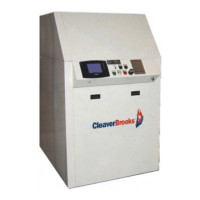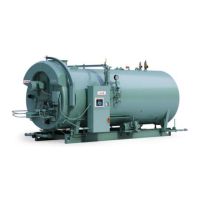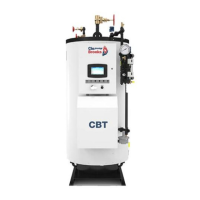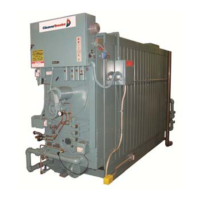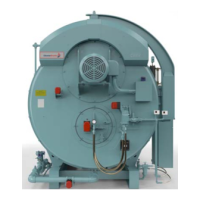Adjustment Procedures Chapter 6
750-177 6-11
There must always be excess air in the combustion process to
account for changes in boiler room conditions and to ensure
the combustion is on the proper side of the combustion curve
(See Figure 6-7).
Proper setting of the air/fuel ratios at all rates of firing must
be established by the use of a combustion gas analyzer.
Efficient combustion cannot be solely judged by flame
condition or color, although they may be used in making
approximate settings. Combustion settings should be done so
that there is a bright sharp flame with no visible haze.
Most flue gas analyzers in use today measure the content, by
percentage, of oxygen (O
2
) and in some cases, smoke.
Carbon dioxide (CO
2
) is not normally measured with modern
gas analyzers, but may be displayed as a calculation.
The O
2
levels through the entire firing range of the burner,
low fire to high fire should be tested. Cleaver-Brooks
recommendations on turndown should also be followed and
the turndown range of the burner should not be exceeded.
It is required to set the burner to operate with a reasonable
amount of excess air to compensate for minor variations in
the pressure, temperature, or burning properties of oil. Fifteen
to 20% excess air is considered reasonable. This would result
in an O
2
reading of 3% to 4%, at high fire.
Final adjustment to fuel input must be made to produce a
minimum of smoke. A maximum smoke spot density of a No.
2 for light oil, as measured in conformance to ASTMD 2156-
63T.
Through the use of the manual flame control, slowly bring the
unit to high fire by stages while monitoring combustion for
overly rich or lean conditions. At the high fire position, the air
damper should be fully opened and the air and oil pressure
readings should be on the order of the readings given in
Chapter 5.
U. LOW OIL PRESSURE SWITCH
The L.O.P.S. prevents burner ignition, or stops its operation,
when the oil pressure is below the setpoint. Adjust the control
by turning the screw on top of control case to an indicated
pressure 10 psi below the established primary oil pressure
setting indicated on the oil supply pressure gauge. The switch
will remain in a closed position as long as the oil pressure
exceeds this setting. The control normally used automatically
resets when pressure is restored after a drop.
Figure 6-9: Butterfly Gas Valve
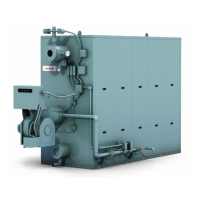
